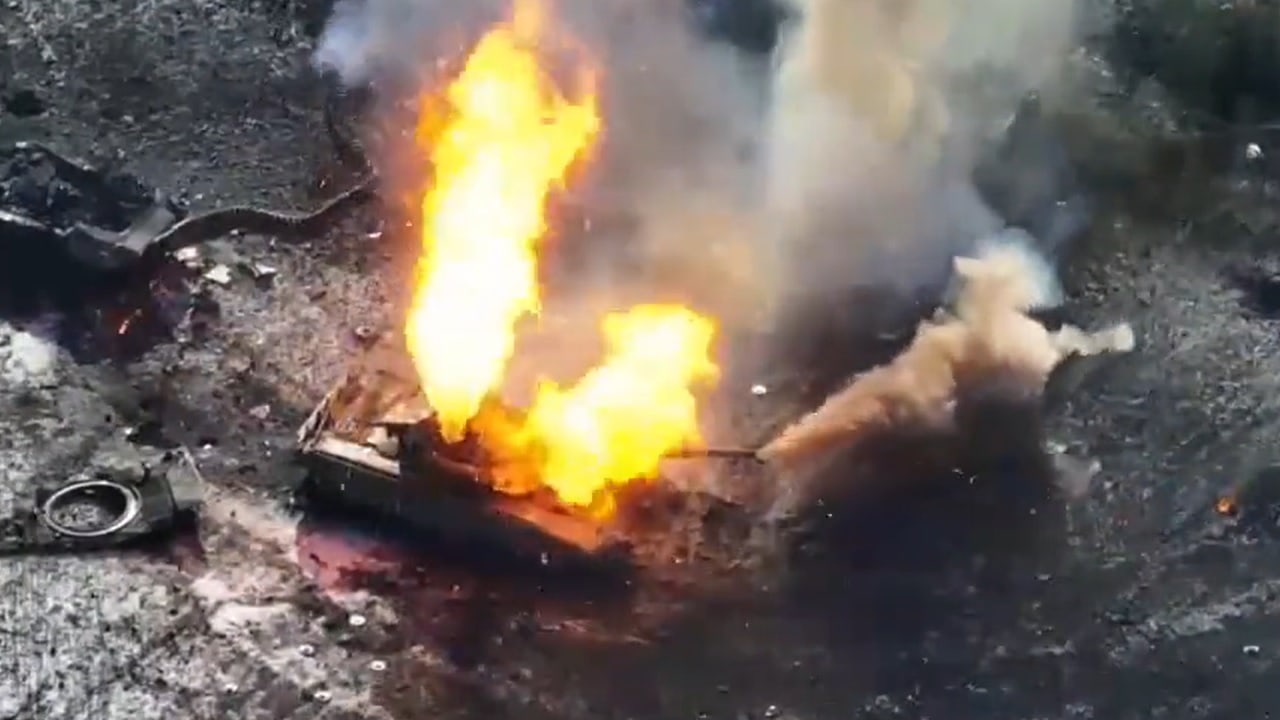Last month, Russia made headlines when it pulled its premiere T-14 Armata main battle tank from the frontlines.
As Moscow’s most modern tank, the Armata was expected to shore up Russia’s beleaguered fleet.
But its short-lived frontline run indicates that Russia’s MBTs continue to struggle.
Putin’s Tanks Keep Dying in Ukraine
Since the beginning of its invasion in February 2022, Russia has lost at least half of its tank fleet. More than 2,000 T-72s, T-80s, T-55/54s, and T-90s have been destroyed, captured, or abandoned on the battlefield. While Moscow has pulled Soviet-era battle tanks out of storage to fulfill the needs of its armored corps, Ukraine has the more lethal fleet. Earlier this year, the U.S. and its NATO allies agreed to provide modern Western MBTs to aid Kyiv’s defensive efforts, including the American M1A1 Abrams, British Challenger, and German Leopard.
Another Russian T-72 Tank Obliterated
With more of these modern tanks hitting the frontlines on the Ukrainian side, Russia’s arsenal is faring even worse.
This week, open-source intelligence group Ukraine Weapons Tracker published a video showing the destruction of a Russian T-72B tank. In the 10-second clip, Ukrainian forces strike the MBT in Kharkiv Oblast.
The T-72 could be described as venerable, with an age of nearly 50 years, but it continues to play a huge role in Russia’s army. The MBT was designed to overwhelm its NATO counterparts in the Cold War. Ultimately, the “Ural” MBT would become the most commonly used tank among Warsaw Pact countries prior to the collapse of the USSR. It was exported to numerous countries, including Iran, Iraq, Finland, India, and Syria.
The T-72 added a host of improvements to its predecessor, the T-62. Fitted with a 125mm smoothbore gun and a 12.7mm anti-craft machine gun, the Ural can attack low-flying targets. Its hull and turret are protected by armor plating and explosive reactive armor. However, like many Russian tanks, the T-72’s turret armor leaves the tank more vulnerable to American-made Javelin anti-tank missiles.
Over the years, several upgraded T-72 variants came to be. According to Business Insider, “The relatively new Kalina fire-control system with an automatic tracker of enemy tanks and its ballistic computer is top-notch. It has a laser range finder with improved thermal sights. It can fire the latest munitions such as armor-piercing sabots and high-explosive rounds.”
While most of Moscow’s T-72s remain in storage, officials have boasted that they could easily be upgraded to the latest iteration.
Russia’s Dwindling Tank Arsenal
As of March, the intelligence tracker organization Oryx confirmed that Moscow had lost more than 1,500 T-72s. Additionally, the remaining 6,900 T-72s in storage may not be easily recoverable due to decades of corrosive exposure to the elements. If Russia had more modernized T-72 variants to lean on, it would not have needed to deploy the World War II relics that it did.
#Ukraine: A Russian T-72B tank was destroyed by Ukrainian forces with another damaged and abandoned in #Kharkiv Oblast recently.pic.twitter.com/Ob0HzULvlI
— ???????? Ukraine Weapons Tracker (@UAWeapons) August 9, 2023
Maya Carlin, a Senior Editor for 19FortyFive, is an analyst with the Center for Security Policy and a former Anna Sobol Levy Fellow at IDC Herzliya in Israel. She has by-lines in many publications, including The National Interest, Jerusalem Post, and Times of Israel. You can follow her on Twitter: @MayaCarlin.

